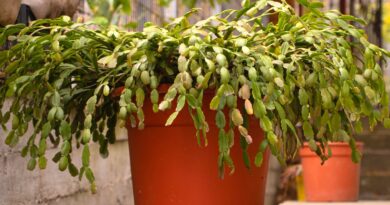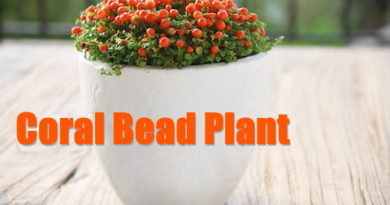Top 13 Houseplants with Health-Boosting Effects
Dozens of studies state that houseplants can clean indoor air. Are they valid? The short answer is yes. Houseplants are good for your health, and they have air-cleaning characteristics!
Studies now show that some special plants clean pollutants out of the air. These studies occurred in airtight spaces in laboratories, so it’s hard to say how well the plants clean the air in our homes. The bottom line is that they cycle pollutants out of the air, although how much and how often they do this is up for debate.
Clean air isn’t the only reason to cultivate houseplants! They distract us from our busy lives, as we must pay attention to how happy they are to care for them well. Some houseplants are edible, with nutritious and delicious leaves full of vitamins and minerals.
Whether you’re a home chef, a houseplant collector, or simply want to boost your health, there are options on this list for everyone. Without further ado, here are 13 houseplants with health-boosting effects.
Tulsi Holy Basil Seeds


It is distinguished by its bubble-gum scent, frost-tolerance, and fast-growing nature. Its health-promoting properties are said to help combat stress and other medical concerns. If allowed to flower, it is a bee magnet and it may reseed. Grow indoors for a continuous supply of fresh leaves throughout the winter.
Aloe Vera


Aloe vera is a multipurpose houseplant! Its nutritious insides are edible and blend well in smoothies, juices, and pulpy drinks. The skin and yellow latex near the flesh cause adverse effects, so remove all the skin and latex from the clear insides. You may freeze the flesh in ice cube trays; the frozen aloe relieves skin pain from burns and stings.
Unlike most other plants, aloe vera takes in carbon dioxide and releases oxygen at night. This allows it to stay drought-tolerant and conserve water in warm, arid climates. It also means the plant refreshes your indoor air at night, making this species perfect for bedrooms or living rooms.
Although incredibly healthy, aloe vera is challenging to grow as a houseplant. Grant it full sun or partial shade with bright light throughout the day. Use grow lights in dark rooms to bolster brightness levels. This succulent hates wet feet and likes water after the soil surface dries. Check the soil moisture before watering to avoid flooding the roots.
Arrowhead Plant


With long, thin vines and lush arrowhead-shaped leaves, the arrowhead plant is a lush indoor spreader with health-boosting characteristics! It may remove toxic pollutants like benzene and formaldehyde from your home, creating clean indoor air.
Easy to care for and a rapid spreader, the arrowhead plant is ideal for beginners to cultivate. Grant it bright, filtered light and regular moisture during the growing season. When happy, individual clumps send out long, rambling vines that climb trellises, walls, or other tall shrubs.
Bamboo Palm


Palms bring tropical flair to the indoors. Vines and herbaceous perennials help create a jungle effect indoors, although palms are necessary additions to complete the look. Bamboo palm is one of the best tropical houseplants for indoor growing, as it creates a healthy indoor environment by removing toxic pollutants from the air. It is also easy to grow.
Palms appreciate high humidity levels, filtered light, and warm temperatures. Place your bamboo palm away from cold or hot drafts and make a pebble tray underneath it to boost humidity levels. Your palm will appreciate regular moisture so the soil stays moist, not soggy.
Boston Fern


The Boston fern is an iconic houseplant available worldwide at nurseries, plant retailers, and home improvement stores. It also goes by the name sword fern, as its long fronds have the appearance of swords.
This tropical fern may remove benzene and formaldehyde from the surrounding air like the arrowhead plant. It helps you breathe easily indoors, and it’s a gorgeous fern for decorating! Grant your specimen filtered light, regular water, and high humidity to keep it happy and healthy.
Cast-Iron Plant


The cast-iron plant is as tough as its name suggests—some specimens may live for decades! Caring for this long-lived plant offers stress relief and satisfaction for keeping something alive for so long. Studies show that transplanting, watering, and caring for houseplants can elevate your mood and mental health.
The cast-iron plant is a wonderfully hardy species perfect for beginners. It tolerates lower light levels than most indoor plants, thriving in conditions where ZZ and snake plants grow well. Let it dry between waterings to avoid root rot, and keep it out of direct sunlight to prevent leaf scorching.
Chinese Evergreen


Chinese evergreens are stunning additions to indoor spaces. They’re one of many plants that NASA discovered that recycle pollutants, creating healthy, breathable air. Although they stay short when young, happy Chinese evergreen specimens grow three feet tall over time, creating a tall, lush structure.
These perennials prefer filtered light indoors, and regular water after their soil surface dries. Happy Chinese evergreens produce flowers from fall through spring; cut them off to encourage the plant to focus on growing more beautiful leaves.
Dozens of varieties offer unique colors, shapes, and sizes. Opt for ‘Silver Queen’ for light green-silver leaves with dark green markings. Or, choose ‘Prestige.’ It sports bright pink leaves with dark green spots.
Holy Basil


Holy basil defies categorization! It’s a herb, houseplant, and outdoor perennial in warm USDA hardiness zone 10. Its leaves are popular for culinary and medicinal purposes; they’re rich in fiber, antioxidants, and minerals. These herbal houseplants may boost your immune health and lower stress levels.
Holy basil tea is an excellent way to receive these beneficial nutrients. It tastes spicy, savory, and herbal. Add honey and lemon to mellow it out and make it easier to drink.
Unlike most other houseplants, holy basil prefers lots of direct sunlight while indoors. Grant it full sun if possible and add grow lights to increase the brightness in dark houses.
Peace Lily


Peace lilies thrive in low-light situations, making them ideal for growing in our homes. They prefer partial or full shade, with filtered light throughout the day. A peace lily or two boosts your health by cleaning the air, and they’ll help ease your stress by providing a living distraction from computers, phones, and devices.
Like arrowhead plants and Boston ferns, this tropical species filters air toxins and breaks them into smaller particles. They’ll send toxic chemicals from the leaves down to their roots where soil microbes process them further.
Pothos


Vines are lovely additions to bare rooms. Drape them on walls, have them grow up trellises, or let them descend off a hanging basket. The hardiest vine for indoor growing is pothos. It’s a tough, tropical houseplant with green-yellow leaves and creeping aerial roots that help ensure healthy, pure air.
Pothos grow well in water or soil and survive in low-light situations where most other plants would suffer. Water them once their soil surface dries, and plant specimens in well-draining soil to prevent root rot.
Rubber Plant


A rubber plant is a tree! It’s a Ficus species with close relatives like fig trees, Chinese banyans, and weeping figs. This species is a part of the famous NASA study that proved certain plants cycle toxic particles from confined spaces.
Indoors, your rubber plant will stay under 10 feet tall, although happy specimens may reach 100 feet outdoors! They need warm temperatures year-round to thrive, and they’ll only survive outside in zones 9 through 11.
Snake Plant


Hardy, tough, and indestructible are the three best words for describing snake plants. These frondy succulents sprout tongue-like leaves from rosettes that grow taller and wider over time. A single plant can spread into bare sites, creating dense snake plant colonies.
This species, like aloe vera, respires at night. It releases oxygen and takes in carbon dioxide, refreshing the air inside while you’re asleep. Place a few specimens throughout your home; you’ll enjoy watching them grow, and they’ll provide you with clean air while they live.
Spider Plant


Simple to care for, spider plants purify the air with their easy-growing leaves. They require little attention and thrive with low water and filtered light. After weeks of growing, happy specimens produce flowering stems with baby spider plants. Propagate these babies to create an indoor colony of spider plants!
The more spider plants you grow, the more air-purifying benefits you’ll receive. The studies show that plants clean toxins in confined spaces, though our houses aren’t truly confined. Grow as many spider plants as possible to bolster their purifying effects.
ZZ Plant


ZZ plants are lush beauties! They’re incredibly ornamental, with fleshy green leaves, brown-green stems, and an arching structure. The stems sprout from underground bulbing rhizomes. They store energy and water, allowing ZZ plants to survive adverse conditions indoors and outdoors.
Like the other decorative houseplants from this list, ZZ plants remove cancer-causing agents like formaldehyde and benzene from the air, enhancing indoor health. They also help increase productivity when you’re feeling lackluster! Situate a few specimens under filtered light in bathrooms, kitchens, or bedrooms to enjoy their healthy effects.




